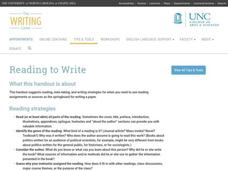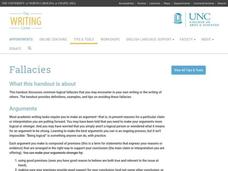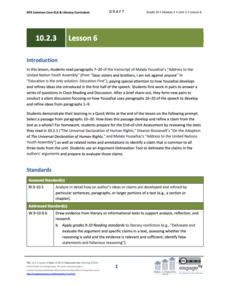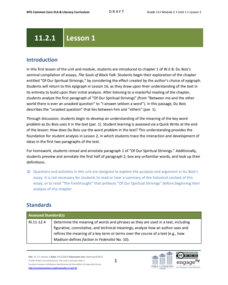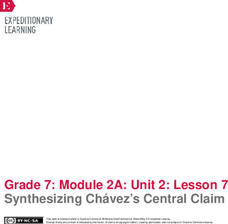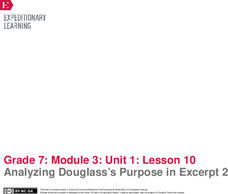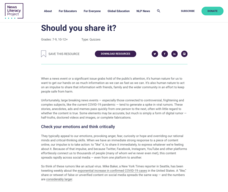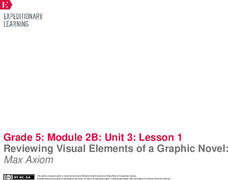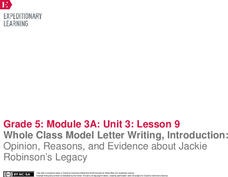University of North Carolina
Reading to Write
Silly journal and essay prompts may be fun to write, but they don't model the kind of writing needed for college papers and standardized tests. The 15th part in a series of 24 covers the concept of reading to write—during and after...
University of North Carolina
Fallacies
All teacher workrooms contain a coffee maker, therefore all teachers must be addicted to coffee. That sentence represents a logical fallacy (although it may be true from some), a topic the seventh installment in the 24-part Writing the...
Brigham Young University
Problems? Working it Out
Working in pairs, set designers take turns sharing their sketches, explaining how their renderings articulate their concept, and receiving feedback on concerns and questions.
Orlando Shakes
The Hound of the Baskervilles: Study Guide
Sherlock Holmes may have been the greatest detective in literary history. A study guide for The Hound of the Baskervilles introduces a story featuring the famous detective before sharing activities related to the text. Readers...
Northern Ireland Curriculum
Dealing with Feelings
Five activities encourage scholars to look inside, get in touch with their emotions, and express their feelings appropriately. Stories set the stage for feeling identification and in-depth discussions. Role play and the act of miming...
EngageNY
Grade 10 ELA Module 2: Unit 3, Lesson 6
Let children be children. Scholars read in a speech by Malala Yousafzai how childhood is absent as children are forced to work and get married at a young age. Learners analyze part of the speech and discuss it in groups. After sharing...
EngageNY
Grade 10 ELA Module 3: Unit 1, Lesson 8
Sometimes, you just need to get to the point. Scholars examine an excerpt from The Immortal Life of Henrietta Lacks, analyzing it and gathering details to determine the central idea. Completing the Surfacing Issues Tool organizer and...
EngageNY
Grade 10 ELA Module 4: Unit 1, Lesson 4
High schoolers read the final section of E. B. White’s Death of a Pig and examine the impact of the words and tone he used. In pairs, learners discuss their homework from the previous night, answer questions about the text, and write in...
EngageNY
Grade 11 ELA Module 2: Unit 1, Lesson 1
When is a word more than just a word? Scholars examine the significance of a word used by W.E.B. Du Bois in "Of Our Spiritual Strivings." Readers carry out a deep discussion of the use of the word problem in the text. After sharing ideas...
EngageNY
Analyzing How Literature Draws on Themes from the Bible and World Religions: The Golden rule (Chapter 3)
Scholars use their Golden Rule Note-catcher to examine passages from To Kill a Mockingbird. They then take a gallery walk to compare and contrast the quotes before sharing Think-Write-Pair-Share ideas on how the quotes demonstrate the...
EngageNY
Examining How Word Choice Contributes to Tone and Meaning: Close Reading of “Wet and Crying”
Scholars participate in a Write-Pair-Share activity while answering questions about the meaning of words in "Wet and Crying." They use their Write-Pair-Share note-catchers to guide their thoughts and then share with the class. After...
EngageNY
Analyzing the Power of Different Mediums: A Mighty Long Way
Weigh the pros and cons. Class members continue sharing their thoughts on media and events by watching the video John Chancellor Reports on the Integration at Central High School. They discuss the advantages and disadvantages of gaining...
EngageNY
Analyzing Textual Evidence: Working Conditions in the Mills
Deafening, dusty, debris. Such were the working conditions in the 1800s textile industry as portrayed in Katherine Paterson's novel Lyddie. Scholars watch a short video clip about life and work in the mills. Next, they work...
EngageNY
Synthesizing Chávez’s Central Claim
Class members play an interactive game, matching strips of paper containing rhetorical devices with examples from César Chávez use rhetoric in his 1984 speech, "Address to the Commonwealth Club of California." Next, partners discuss...
Missouri Department of Elementary
What Is Important to Me?
Pupils complete an activity sheet to determine what values are most important to them. They then discuss their responses with partners before sharing the results of the discussion with the class.
EngageNY
Planning the Performance Task
Class members work in pairs and use an Ad Analysis planning guide to begin planning their final tasks. After sharing ideas with their partners, learners begin working on their final products.
EngageNY
Analyzing Douglass’s Purpose in Excerpt 2
Learners revisit Plantation Life to focus on Douglass's purpose and choices he made for writing the text. They complete text-dependent questions, an analysis note catcher, and finalize their thoughts by sharing out with the class.
News Literacy Project
Should You Share It?
Sharing isn't always caring. Scholars learn how to reduce the spread of misinformation on the Internet. They take an online quiz of example posts targeted to a specific audience. Using critical thinking skills, they see if they can tell...
University of Waikato
Estuary Metaphors
Mixing metaphors into science. To begin, the instructor leads a discussion about estuaries to determine what the class already knows. Working in small groups, pupils determine how a selected object is similar to an estuary, how it...
EngageNY
Researching Facts
How did the 1906 San Francisco earthquake and fire affect the city's inhabitants? Scholars embark on a quest to discover the answer as they work in small groups to research articles about the event. They finish by completing a jigsaw...
Texas Education Agency (TEA)
Investigating Careers - Sign Me Up!
Extra, extra, learn all about it! Students view posters, brochures, and other resources to discover the extracurricular activities offered in the school and community. They also write a self-reflection sharing their knowledge about the...
EngageNY
Applying Research Skills: “Rachel Carson: Environmentalist and Writer”
It's important to cite sources! Scholars take a closer look at their research about DDT by examining how to cite sources. Learners take turns sharing information that would be used to cite sources to complement Rachel Carson:...
EngageNY
Reviewing Visual Elements of a Graphic Novel: Max Axiom
Pass the tea! Using the resource, scholars participate in a Tea Party protocol to analyze text and images about inventions that helped meet societal demands. After sharing their observations with each other, they discuss visual elements...
EngageNY
Whole Class Model Letter Writing, Introduction: Opinion, Reasons, and Evidence about Jackie Robinson’s Legacy
Sharing is caring! Using the collaborative lesson, scholars engage in a shared writing process with the teacher. Working together, they compose opinion letters about Jackie Robinson's legacy.
Other popular searches
- Equal Sharing
- Sharing and Caring
- Sharing Equally
- Preschool Sharing and Caring
- Sharing Memories
- Sharing Opinions
- Sharing and Getting Along
- Division Sharing
- Information Sharing
- Sharing African Culture
- Sharing and Caring Stories
- Equal Sharing Division
